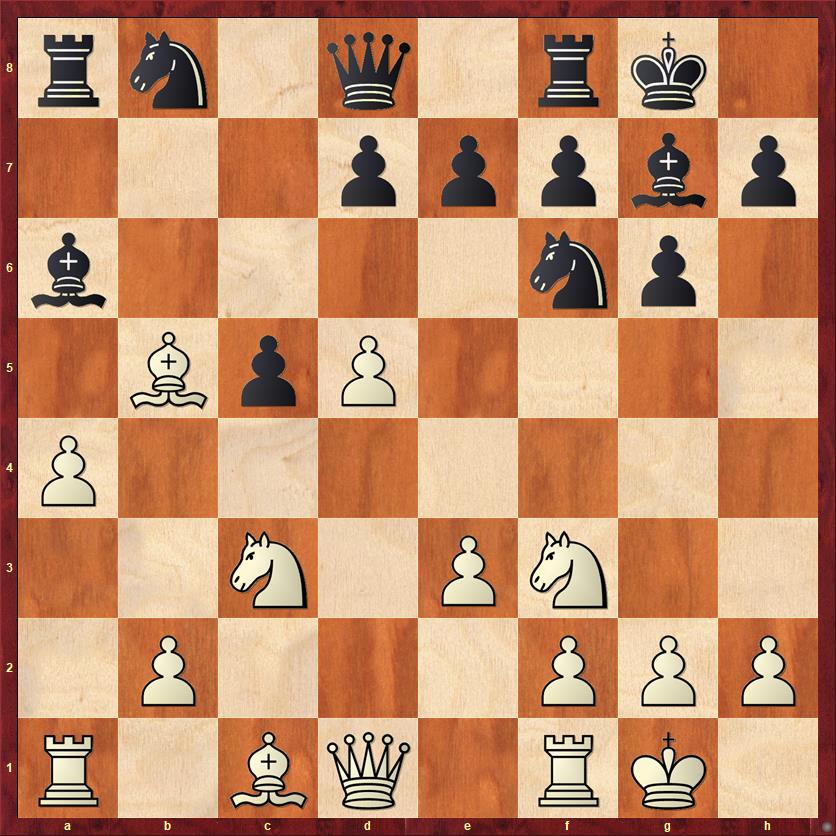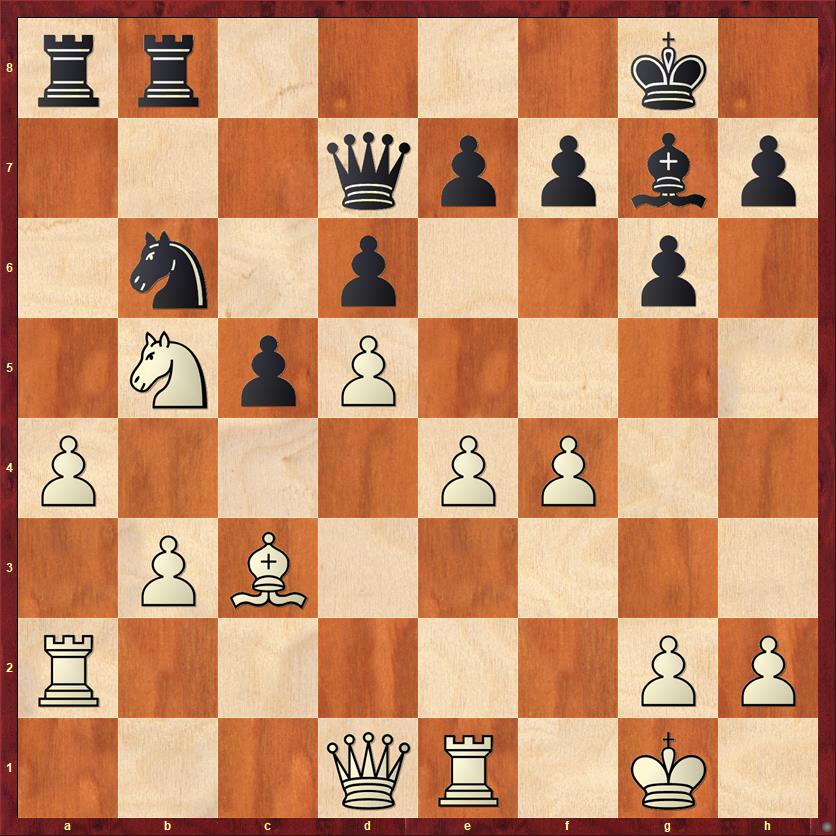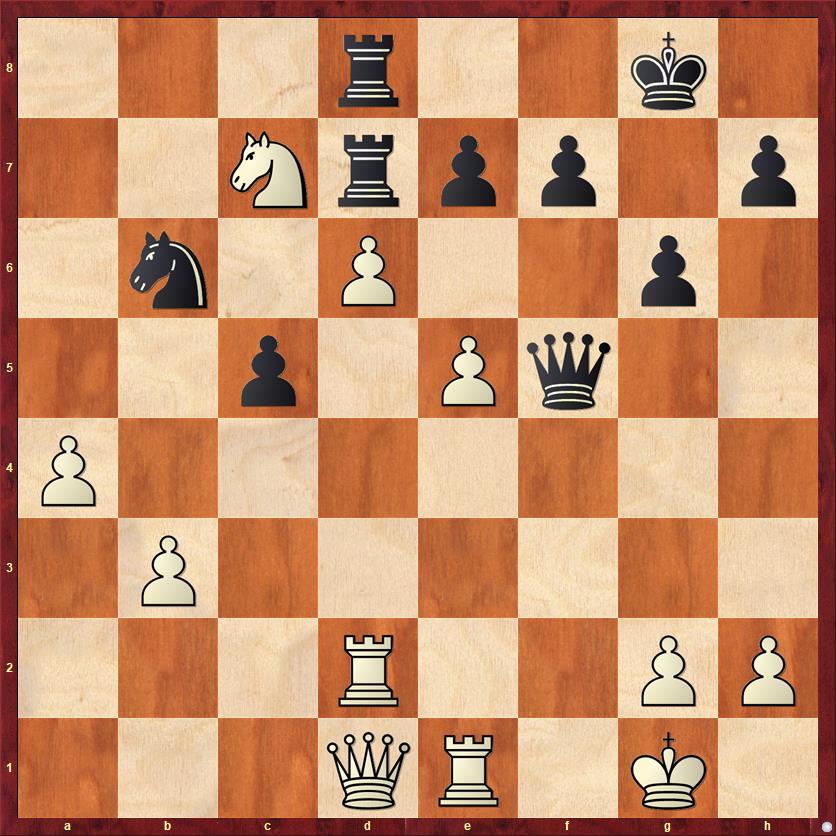We’ve come to the halfway point in my chess narrative, and it’s the year of a big change: my move to California. During the first 25 years of my chess career I lived in several different places: Indiana, Virginia, New Jersey, North Carolina, Ohio. In the second 25 years I’ve lived in only one place.
This transition was the biggest and scariest one of my life, because my previous moves had been from a known situation to a similar situation. Prep school to college. College to graduate school. Graduate school to my first teaching job. First teaching job to second teaching job. For the first 37 years of my life, I had always taken the path of least resistance. But this time was different: I was going to have to reinvent myself, rethink from the ground up what I wanted to do with my life. This was the only time I ever jumped off a cliff without any idea of what was on the other side.
As I may have mentioned here before, one of my fantasies about what happens after we die is that we get to live one year again. We aren’t given the chance to change anything; we don’t even know we’re living it again. It’s just a second chance to experience and enjoy our best year. My top choice would be 1988, the year I fell in love and got engaged. But if, through a clerical error in the Afterlife, I were granted a second choice, I would go with 1996. Because that was a year when every day was a new adventure.
In my next post I’ll write more about my preparation to leap off a cliff, the leap itself, and what I found on the other side. But, keeping in mind that this is supposed to be a chess blog, I’ll stick to chess in this post and show you a cute little game that also happens to be the last rated game I played in Ohio.
The Ides of March Mini-Swiss was a one-day tournament organized by a friend of mine, Tom Green. I managed to convince two students from the Kenyon chess club, Lei Yu and Ben Fowler, to come along.
Alas, I wasn’t a very good chess evangelist. In my seven years at Kenyon, I had kept the chess club going as a faculty advisor, even arranged a few matches with other colleges (particularly Tom Green’s Ohio Wesleyan team). But I never seemed to get anyone interested in playing USCF-rated chess. Lei and Ben were, I believe, the first two students who were unrated who decided to take that plunge.
Before them, there was one other Kenyon student who came to a couple of tournaments with me, but he had already played tournament chess and had a rating in the 1500s. His name was Shawn Pealer. I thought he had the potential to be a lot better than 1500, and I was right! Several years after he graduated from Kenyon he started playing seriously in New Jersey, and then in North Carolina. He has flourished there, playing in more than 200 tournaments and earning the National Master title.
While Lei and Ben were getting their feet wet in the unrated section, I played in the top section and scored a satisfying 2.5/3, with a draw against Ted Alfred, an expert who had always been a nemesis for me, and wins against two class-A players. Here’s the second one of those games. I wrote in my chess notebook: “A scintillating finish! When White succeeds in consolidating the Queenside against the Benko Gambit, he can often blow Black away in the center.”
There’s also something very unusual about this game, which I won’t give away yet — see if you can figure out for yourself what it is.
Dana Mackenzie — Jack Russett, 3/17/1996
1. d4 Nf5 2. c4 c5 3. d5 b5
For some reason I have a very good record against the Benko Gambit, maybe because my opponents are usually rated lower than me. The Benko is a good example of an opening that is extremely popular among class-A, B, and C players, but not so popular among masters.
4. cb a6 5. e3 g6
Already deviating from 5. … Bb7, which was Black’s choice in Year 15 of this series. That move is a more direct attempt at taking advantage of White’s “small” pawn move 5. e3 (rather than e2-e4 as in the main line Benko). By comparison, in this game Black just seems to be trying to play the main line, but White doesn’t cooperate.
6. Nc3 Bg7 7. Nf3 O-O 8. a4 ab
Maybe a slight inaccuracy. Often Black waits for White to play Bc4 before playing the pawn capture, in order to gain a tempo.
9. Bxb5 Ba6 10. O-O …

FEN: rn1q1rk1/3pppbp/b4np1/1BpP4/P7/2N1PN2/1P3PPP/R1BQ1RK1 b – – 0 10
Comparing this to the main variation of the Benko, I think that White has a much better game. First, White has managed to castle and develop normally. Instead of cowering at a2 and b2, White’s queenside pawns are a little bit more assertive. One has gone to a4 and the other will probably go to b3 (although it would love to be assertive too and go to b4, if it gets the chance). White is planning to keep a piece stationed on b5, either the bishop or the knight, which blunts a lot of Black’s intended pressure against the queenside pawns.
The only downside to this strategy is that Black might blow up the pawn formation with … c5-c4. We’ll see this idea in some variations below. However, this is still night-and-day different from “normal” Benko Gambit play. After Black plays … c5-c4, the worst-case scenario for White is that all the queenside pawns get traded and the game heads for a draw. By comparison, in the main line Benko, the worst-case scenario is that White loses the b2 pawn, the a2 pawn, and the game.
10. … d6 11. Ra3 Nbd7 12. Re1 …
Maybe a little bit more cautious than necessary. White can play more actively with 12. Bxa6 Rxa6 13. e4.
12. … Bxb5 13. Nxb5 Ng4
I was expecting 13. … Ne4. Black’s move is reasonable but it lets me chase his knights around a bit. The question is always whether I’m launching an attack or over-extending my pawns.
14. e4 Nge5 15. Nxe5 Nxe5 16. f4 Nc4 17. Ra2 Nb6 18. Bd2?! …
The move 18. b3 looks more natural, and I played it on the next move anyway. My bishop would make much more sense on e3, where it eyes Black’s knight and discourages the … c5-c4 break.
18. … Qd7 19. b3 Rfb8 20. Bc3 …

FEN: rr4k1/3qppbp/1n1p2p1/1NpP4/P3PP2/1PB5/R5PP/3QR1K1 b – – 0 20
This move (20. Bc3) was supposed to be the point of playing 18. Bd2, and I have to say I have always liked the idea of eliminating Black’s Benko bishop in this fashion. But is it actually a good move?
In my notes to the game, I opined that this was probably the right time for Black to blow up the queenside with 20. … c4. I still think that for human play, this is the most thematic way for Black to stir up counterplay. The computer disagrees, and comes up with a very complex line that is allegedly good for White. It starts 20. … c4?! 21. Bxg7 cb 22. Qxb3 Kxg7. Here is where my analysis would stop if I were playing this game over the board. There are too many pins, on the a-file and the b-file and the e8-a4 diagonal, and White cannot hang on to his extra pawn. I evaluated the position as equal after 23. Rb1 Nxa4!
But the computer says the White can sacrifice the pawn in a better way, which gives him control of all the useful lines and squares: 23. Qc3+! Kg7 24. Nd4 Nxa4 (or 24. … Rxa4 25. Rb2) 25. Qa1! and all of a sudden it is Black who finds himself looking at an awkward pin. The computer line continues 25. … Nb6 26. Nc6 Rxa2 27. Qxa2 Ra8 28. Qb3. In spite of the even material, the computer gives White about a 1-pawn edge here. When you think about it, you can see why because the play will now shift to the kingside — it has to, because there’s nothing left on the queenside! — and it’s not so easy for Black’s pieces, especially the awkwardly placed knight, to switch over to the kingside. And White’s knight on c6 has a really beautiful outpost.
This type of variation is, in my opinion, beyond human competence: eight moves of tactics followed by a very intangible advantage at the end. The bottom line is that 20. … c4 would have been a very good try for Black, but it’s interesting to see that winning back the gambit pawn does not mean that Black is out of trouble.
I’m sure that my opponent did not go through any such long calculations, but he played the most natural and simplest move.
20. … Bxc3 21. Nxc3 Ra5?
Once again the punctuation is based on computer analysis. In my notebook, I wrote, “after 21. Nxc3 White’s queenside is unassailable, as … c4 is now met by b4.” This was why I felt it was necessary for Black to play … c4 on move 20, when he still had the opportunity.
The computer tells me that I am wrong, and Black can get enough counterplay with 21. … Qa7! Black’s idea is twofold: either to get a discovered check, which allows him to play … c4 with a tempo; otherwise, to move his queen to a5, where it prevents White’s thematic move b4. In either case, Black waits to play … c4 at the moment when it is most disruptive.
I am reluctant to go through the long computer analysis of several variations to show that Black is fine after … Qa7. As White, I would distill all this analysis down to one lesson: This is what happens when you play a move like 16. f4 and you don’t follow it up with Be3. Your king is subject to discovered checks and your dark squares are still weak, even if there aren’t any dark-squared bishops around to exploit them.
Well, let me amend that. It’s what happens if you don’t play Be3 against a computer. Against a human class-A player, you can get away with all this stuff, because 21. … Qa7 is not at all easy to find.
After the text move, 21. … Ra5, White’s initiative just gains momentum like an avalanche sweeping Black’s pieces off the board.
22. e5! …
Yes! Now this is the kind of chess move I understand. Caveman chess!
22. … de
In case you’re wondering, it’s too late for the computer move 22. … Qa7 now, because 23. ed c4 24. Qd4 cb 25. de! is death. As is so often the case, one tempo has made all the difference. Again, it’s unclear how relevant these ultra-ultra-sharp computer variations are to human over-the-board chess.
23. fe Rd8 24. Rd2 …
You can just feel the tide of the game shifting as all the pieces that were focused on the a- and b-files start moving over to the d-file. This is what a loss for Black looks like in the Benko Gambit.
24. … Ra7 25. d6 Qe6
A clever move, whose point is to answer 26. de with 26. … Rxd2, when the queen on e6 protects e8 and thus keeps White from promoting. Keep this idea in the back of your mind.
26. Nb5! …
Invite all of your pieces to the party!
26. … Rad7 27. Nc7 Qf5

FEN: 3r2k1/2Nrpp1p/1n1P2p1/2p1Pq2/P7/1P6/3R2PP/3QR1K1 w – – 0 28
White to play and win! Hint: my last move chased my opponent’s queen away from e6, the square where it had to be.
28. de! …
I was told after the game that my opponent’s jaw dropped when he saw me play this move. He was so sure that the d-pawn was pinned. Of course, after you see it, it’s obvious. If 28. … Rxd2 29. edQ+ and the two queens defend each other “through” Black’s rook.
I mentioned in my last post that I love to play “impossible moves,” moves that my opponent is sure that he has prevented. In this case, the pawn at d6 seems to be pinned… but isn’t.
28. … Rc8 29. e8Q+ Rxe8 30. Nxe8, Black resigns
Although the “jaw-dropping” moment 28. de is nice, what I really like about this combination is that it actually began two moves earlier, with 26. Nb5. I asked myself, “How can I drive the queen away from e6 so that I can take on e7?”
Now, have you figured out what is unusual about this game? Here it is: White won without ever moving his queen. She stayed on d1 the whole time, never moved and was never captured.
Back in Year 21B, I showed you a game with a similar oddity, where I won without ever moving my queen bishop. However, I imagine that sort of thing is not too uncommon. But to win without ever moving your queen, which is your best attacker, is (I suspect) considerably rarer. Does anyone know of any examples at the master level? The criteria are that the winning player’s queen should never move, never be captured, and the winning player has to play at least 30 moves. The last stipulation is to rule out games won by an opening trap in 10 moves.
On the day I played this game, my wife and I were literally in the process of packing our boxes to move, even though we didn’t know yet where we were going to move to. Two days after this game, I had the eureka moment that changed my life and (eventually) answered the question of where we were going to move to. Is that a good enough teaser for my next blog post?
Lessons:
- The “Modern Variation” with 5. e3, followed by a4 and attempting to maintain a strong point on b5, is an excellent way for White to meet the Benko Gambit. In my experience, it reduces White’s losing chances to near zero and gives him good chances of winning.
- Bad things happen to those who play f2-f4 and don’t have a plan for defending the dark squares (e.g., with Be3).
- If you see a variation that would win except for one saving move for your opponent, look for ways to take away that saving move (e.g., by deflecting the opponent’s key defender). This is how many brilliant combinations are discovered.
- Be alert for “impossible moves,” both for yourself and your opponent.
- Invite all of your pieces to the party! (But sometimes the party will come to them, as in the Curious Case of the Untouched Queen.)


